Bombe
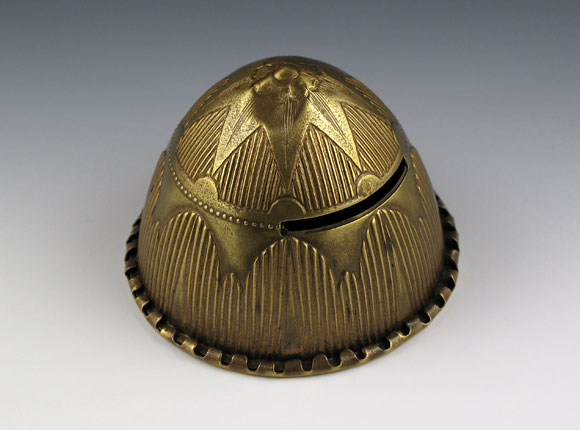
Needle Case
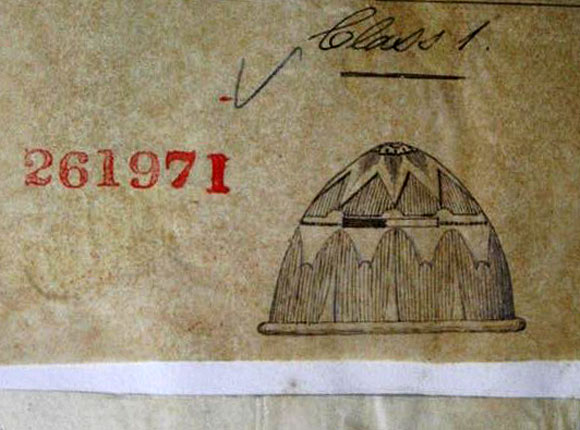
Design Representation
Design Details
Needle Case Type: |
Figural |
Patent/Registered to: |
W. Avery & Son - Redditch |
Patent/Design Representation #: |
Ornamental Class1: Metal: #261971 |
Patent/Design Registration Date: |
April 17, 1872 |
Location of Patent/Design Registration: |
The National Archives (TNA) - Kew, UK |
Reference #: |
TNA Representation - BT 43/32/261971
TNA Register - BT 44/2/261971
|
Dimensions: |
5.1 diameter x 3.3 |
Material: |
Brass |
Name Variations: |
a) W. Avery & Son - Redditch
b) Baggallays, Westall & Spence - London (the sole source of this information is Horowitz and Mann as no example of this needle case
with this company name has been seen by the authors of this website) |
Other Variations: |
None |
Additional Photographs
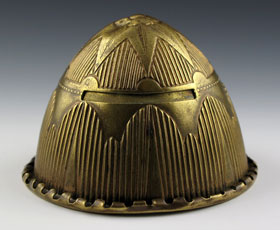
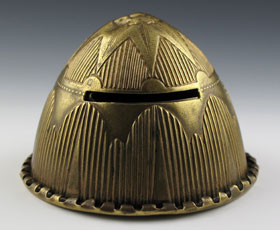
Side closed and side opened
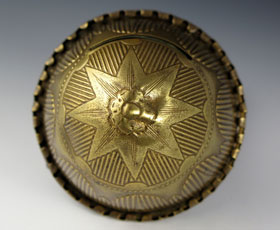
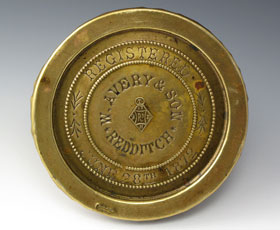
Top and botton views
Facts
The bombe or bombe glacée is a frozen desert which is named after the spherical or bomb shaped mould in which it was once made.
Traditionally it is made up of two types of ice dessert mixture. The first, which can be ice cream, sorbet or fruit ice, is used to
line the mould and when that is frozen, the second or bombe mixture is used to fill the mould before sealing and freezing. To serve
it is removed from the mould which often had a screw mechanism to allow air to enter to assist the unmoulding process, and then
decorated. Other mould shapes came into use, commonly cylindrical with rounded tops.
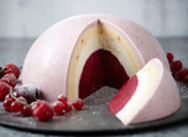
History
The introduction of the bombe is variously credited to either French chefs, as they had a history of producing moulded frozen ices as far
back as the 16th century, and of having mastered ice cream by the 17th century, or to Italian confection and ice makers. The book “The
Italian Confectioner” (London 1820) by Jarrin contains the earliest recipe for an ice cream filled, hollowed out fruit flavoured ice dessert
which was called Bomba Ice. Bombes had appeared on restaurant menus by the early 1880s and were also popular for special occasions such
as wedding breakfasts for which they would be elaborately decorated.
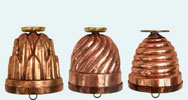
Miscellaneous
There are numerous named varieties of bombe. Auguste Escoffier included over 30 recipes in his influential volume “Le Guide
Culinaire”. The Larousse Gastronomique gives the traditional bombe mixture recipe used as the inside filling:- “the mixture is made
with 32 egg yolks per litre (sugar) syrup (specific gravity: 1.285). Pour the syrup and egg yolks into a saucepan and place the pan
in a bain-marie over a moderate heat. Whisk vigorously until the mixture is thick and creamy, then press it through a very fine
sieve. Whisk again away from the heat, until completely cold: by this stage it should be light, fluffy, and white. Finally add
an equivalent volume of whipped cream and the chosen flavouring.” It goes on to say that less rich mixtures are used today.
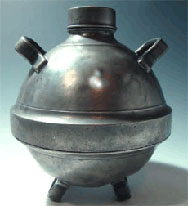
Note: Right side panel text and photos provided by Lynda Herrod.













